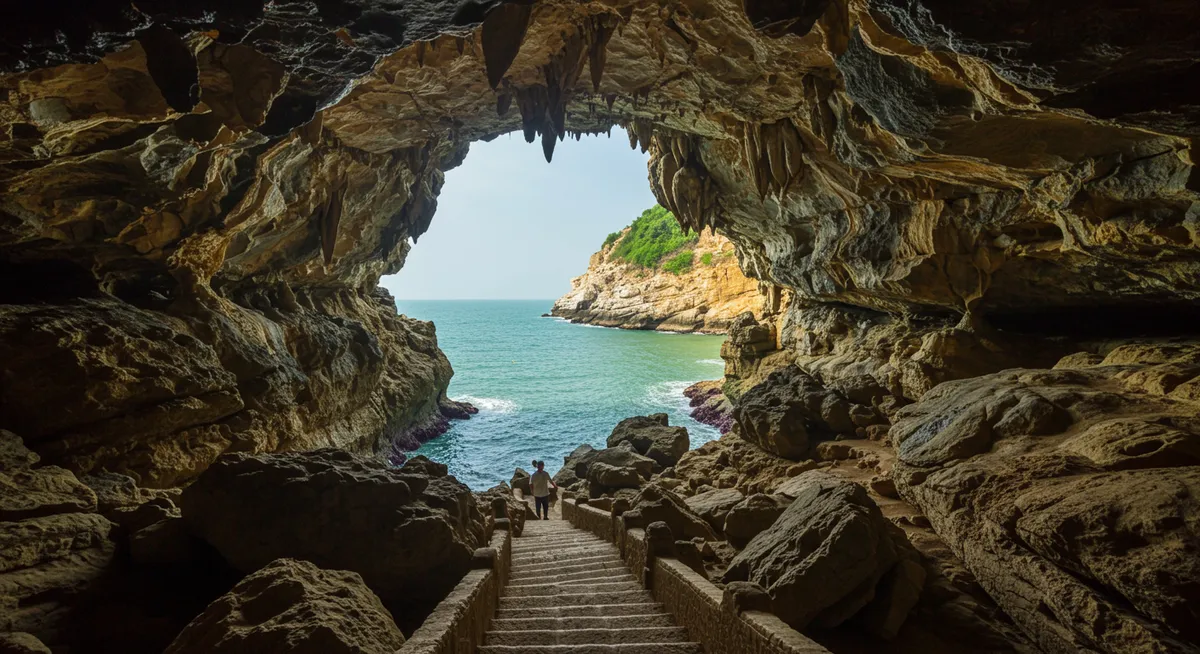
Vung Tau Natural Caves & Grottoes Guide
Table of Contents
Want to find the best nature experiences for this destination? Chat with our nature tourism specialist!
Get Nature TipsCategory: vung-tau-natural-caves-and-grottoes
Discover Vung Tau's Hidden Natural Caves and Grottoes
Having explored Vietnam's diverse landscapes for years, I've always found Vung Tau's blend of coastal beauty and intriguing geological formations particularly captivating. Beyond its popular beaches, the city holds secrets within its rugged hillsides and along its rocky shores: a collection of natural caves and grottoes waiting to be discovered by intrepid travelers.
Hon Ba Island Grotto: A Spiritual Sea Sanctuary
Venturing to Hon Ba Island, just off Vung Tau's coast, offers a unique experience. Accessible by foot during low tide via a rocky pathway, this small island is home to a revered temple and, crucially, a spiritual grotto nestled within its rocky base. This particular grotto, often overlooked by casual visitors, provides a serene escape and a glimpse into local religious practices. The natural rock formations inside are impressive, shaped by centuries of wind and waves. I recall visiting at dawn, feeling the tranquil energy of the place as the tide receded, making the walk an adventure in itself. Remember to check tide times for safe passage to this special natural cave.
Exploring the Caves of Nui Lon and Nui Nho Mountains
Vung Tau's prominent mountains, Nui Lon (Big Mountain) and Nui Nho (Small Mountain), aren't just scenic viewpoints; they also conceal several smaller natural caves and rock shelters. While not as grand as famous limestone caverns, these formations offer intriguing glimpses into the area's geology and history. Many are easily accessible along popular hiking trails, making them perfect additions to an active day out. As an avid hiker, I've personally stumbled upon several such modest grottoes while exploring the best hiking trails in Vung Tau. They provide natural shelter and a cool respite from the tropical sun, often featuring unique rock patterns. These less-traveled spots are excellent for those seeking the quiet charm of Vung Tau's natural caves and formations.
Coastal Grottoes and Rock Formations Near Beaches
Beyond the well-known peaks, the coastline itself reveals fascinating natural caves and grottoes, especially around quieter coves and beaches. These aren't deep caverns but rather impressive sea-carved rock formations and small overhangs that have been shaped by the relentless ocean over millennia. Some of these are visible along the stretch of coast leading to destinations highlighted in our guide to Vung Tau beaches for nature lovers. My advice for finding them is to explore during low tide, paying attention to the intricate details of the rocks. These coastal grottoes are prime spots for photography, showcasing Vung Tau's raw, untamed beauty and providing unique natural shelters from the sun.
Tips for Exploring Vung Tau's Natural Formations
When planning to explore the natural caves and grottoes of Vung Tau, preparation is key. Always wear comfortable, sturdy shoes suitable for uneven terrain. If visiting coastal grottoes, be mindful of tide schedules to ensure safety and accessibility. Bringing a small flashlight can enhance your experience, especially in darker rock shelters. For a broader understanding of the region's natural beauty, consider exploring other Vung Tau nature attractions. Remember that these are delicate natural environments, so always practice responsible tourism by leaving no trace behind. Embracing eco-tourism principles helps preserve these magnificent natural caves for future generations to enjoy.
Frequently Asked Questions
Are Vung Tau's natural caves difficult to access?
What should I bring when visiting Vung Tau's grottoes?
Is it safe to explore Vung Tau's sea caves?
Vung Tau's natural caves and grottoes offer a refreshing departure from its popular beaches, inviting you to delve into the city's geological wonders and spiritual sanctuaries. From the tide-dependent access to Hon Ba's grotto to the smaller, intriguing formations hidden within the mountains and along the rugged coast, each site tells a story carved by nature's hand. Embrace the spirit of discovery and explore these unique facets of Vung Tau's landscape.